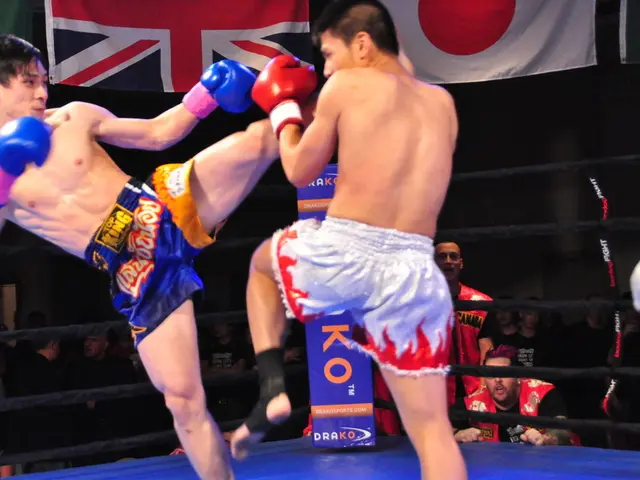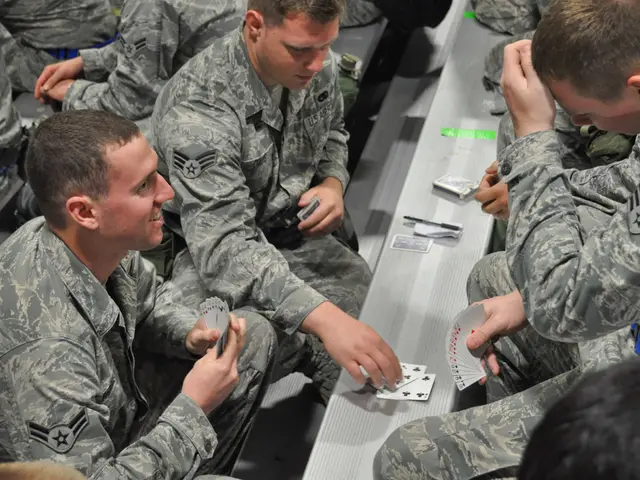Overcoming Fear of Loss and Becoming Resolute: A Guide
Unleashing the Soul: Phil Galfond's Poker Wisdom
Emotions Rule the Game: Logic vs. Emotion, Part 1
Poker has long been seen as a game of cold, hard numbers. But Phil Galfond, one of Omaha's legendary players, knows that logic and emotion are a dangerous dance at the tables.
Originally, Galfond learned from the mastermind, David Sklansky, who approached poker from a purely logical perspective. Inspired by this, he strived to become a poker-playing Terminator, devoid of fear and emotion.
But fate had other plans. Galfond met the brilliant mental coach, Tommy Angelo, who helped him recognize and interpret emotions. It was then that he realized he would never become a robot at the tables. Emotions, no matter how hard he tried to suppress them, lingered and influenced his game in subtle ways.
Feelings are Data too
Take a $100/$200 cash game, for example. Galfond opens from the button ($500), and the BB calls. On the flop, Galfond bets $400 and gets called again. They both check the turn. On the river, the BB bets $600 into a $1,900 pot. Galfond's initial reaction: this looks like a weak ace, he should raise $2,200.**
But second thoughts creep in. Could this be a trap? Galfond starts looking for reasons not to raise, rationalizing that the opponent might bet-3bet or call with a worse ace. But when he stops and examines these feelings, he realizes they're guiding his decisions.
When Galfold pays attention, he sees that his emotions add the missing piece of the puzzle. He would have missed out on the important information if he tried to ignore his feelings.
Emotions in Action
Let's say Galfold is pondering a river decision. He has two options - bluff for $50,000 or fold. With each second, he feels more inclined to fold. Why? Because fear is gnawing at him. But he soon realizes that if he's even doubting, he must be in a borderline situation. The bluff might actually be profitable if he wasn't afraid.**
Of course, everyone's emotions are different. What triggers fear in Galfold may invigorate someone else. But we can all utilize the same algorithm:
- Identify situations that trigger uncomfortable emotions
- Recognize them during play
- Assess whether logic or emotion is pushing you to bet, call, or fold
Emotions won't disappear, but if you acknowledge and analyze them, you'll uncover the best logical solution more often. Just don't confuse emotions with intuition - that's based on experience.
Emotions vs. Logic: Off the Tables
Just like in poker, we make decisions in real life that involve logic, emotions, or a combination of both. Sometimes, it may feel like we're choosing between two equally valid options, like speaking up about an uncomfortable topic or keeping quiet. In those situations, Galfond believes it's the harder choice - the one that brings immediate pain and discomfort - that offers the most significant long-term rewards.
Don't mistake fear for evidence that someone's wrong. Emotions reflect our internal state, and there are many factors that influence our reactions, including character, past experiences, and even a bad night's sleep.
A Closer Look
Take anger, for example. Many people perceive it as a signal that they're right, and someone else is wrong. But anger often serves as a protective mechanism to cope with more complex emotions like fear, shame, pain, guilt, frustration, or sadness. For instance, consider a friendly gathering where each person shares a good experience from the past month. Bob, who's been struggling financially, might feel guilty and ashamed when Steve proudly talks about buying his mother a car. Bob gets angry, projecting his discomfort onto Steve. But it's his own emotions that are driving the response.**
Discovering the Signal
When something upsets, angers, confuses, or frustrates you, it's often a story about you. Look beyond the surface-level reaction and think about what triggered you. Treat emotions as a puzzle to solve. Learn to do this, and you'll find new possibilities in poker and beyond.
Who Rules the Table?
In a coaching session, Phil Galfond was asked by mid-stakes regular Mark about switching from cash games to tournaments. Mark was discouraged by the lack of edge in cash games. There seemed to be one fish everyone targeted, with the rest being regs.
Mark complained that there were too many stronger players at the table. So, Galfond asked him, "Why can't you become the best player at the table?" Mark was stunned, as the idea had never crossed his mind.
Motivated by this question, Mark reconsidered his approach to the game, set new goals, and proved that a mid-stakes regular could be a force to be reckoned with.
Whether it's cash games or tournaments, there's always someone stronger at the table, right? But Galfond's experience shows that there are no insurmountable boundaries. Recognize your fears and misconceptions, and seek opportunities to break through them.
Remember, one breakthrough - both in poker and in life - often stems less from perfecting a skill and more from seeing things in a new light.
- Logic and emotion have a complex interplay in poker, as Phil Galfond learned from his encounters with David Sklansky and Tommy Angelo.
- In a high-stakes game, Galfond's initial reaction might be to raise when faced with an opponent's bet, but he finds that his emotions subtly guide his decisions.
- Fear can lead Galfond to hesitate in making a profitable bluff, but recognizing these feelings helps him uncover the best logical solution.
- Everyone's emotions are different, but identifying and analyzing them allows Galfond to make better decisions, whether in poker or real life.
- Emotions, such as fear, do not necessarily indicate wrongdoing; they reflect our internal state and are influenced by various factors like past experiences and mental health.
- Anger is often a way to cope with deeper emotions like shame or guilt, as shown in a friendly gathering scenario involving Bob, who feels guilty about Steve's financial success.
- In a coaching session, Galfond encourages Mark to reconsider his mindset and strive to be the best player at the table, showing that no obstacle in poker or life is insurmountable with self-reflection and personal growth.




